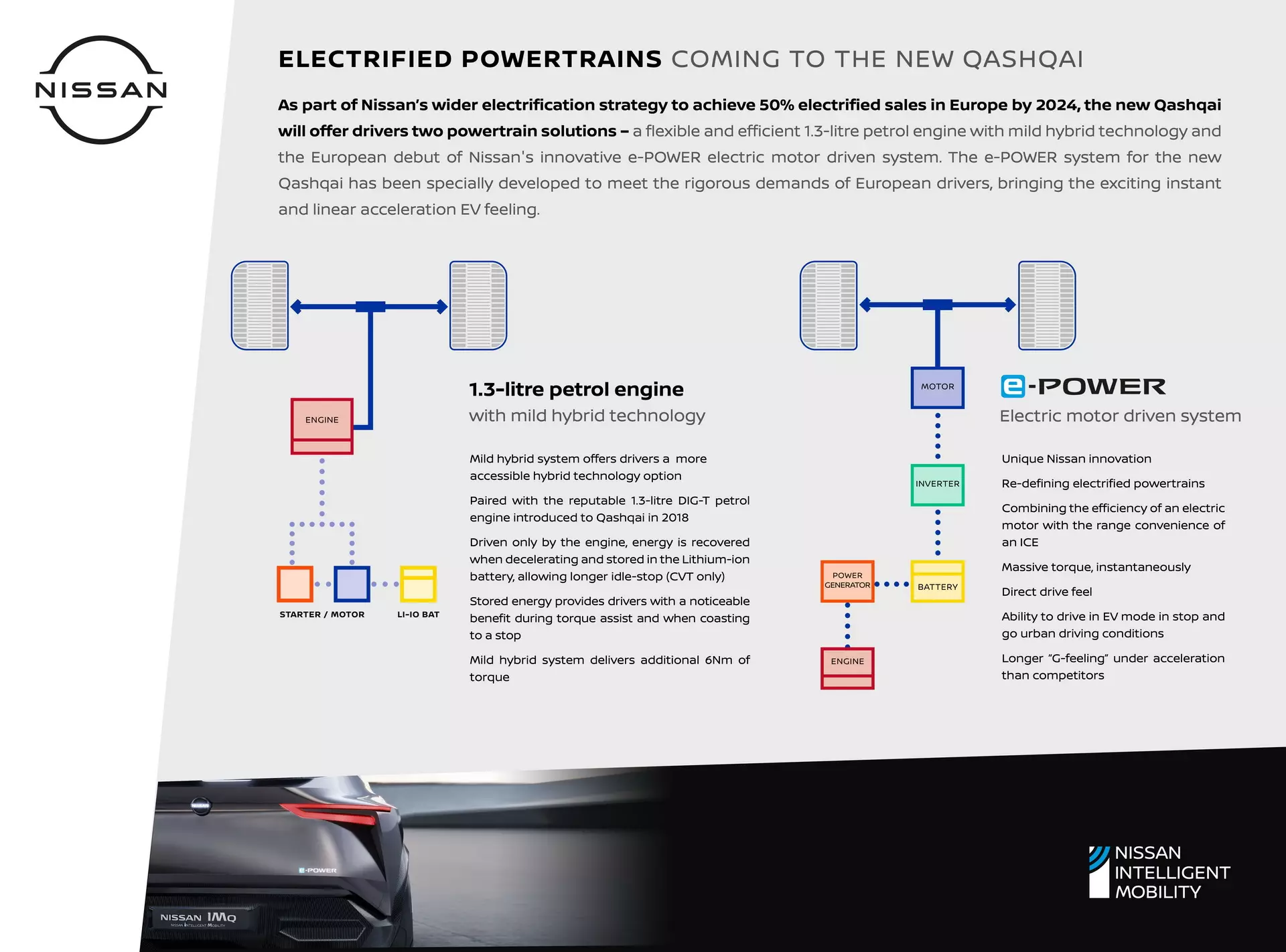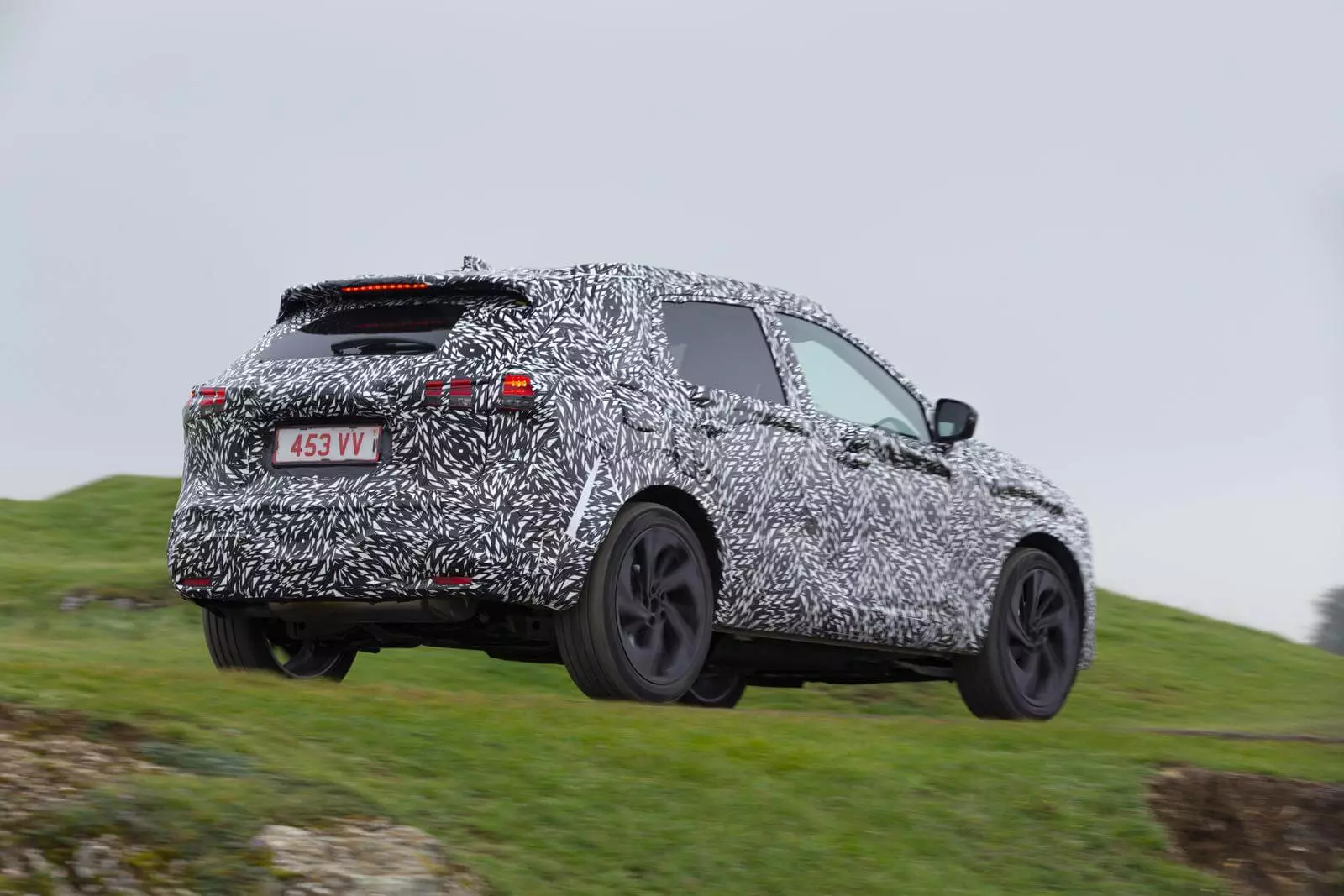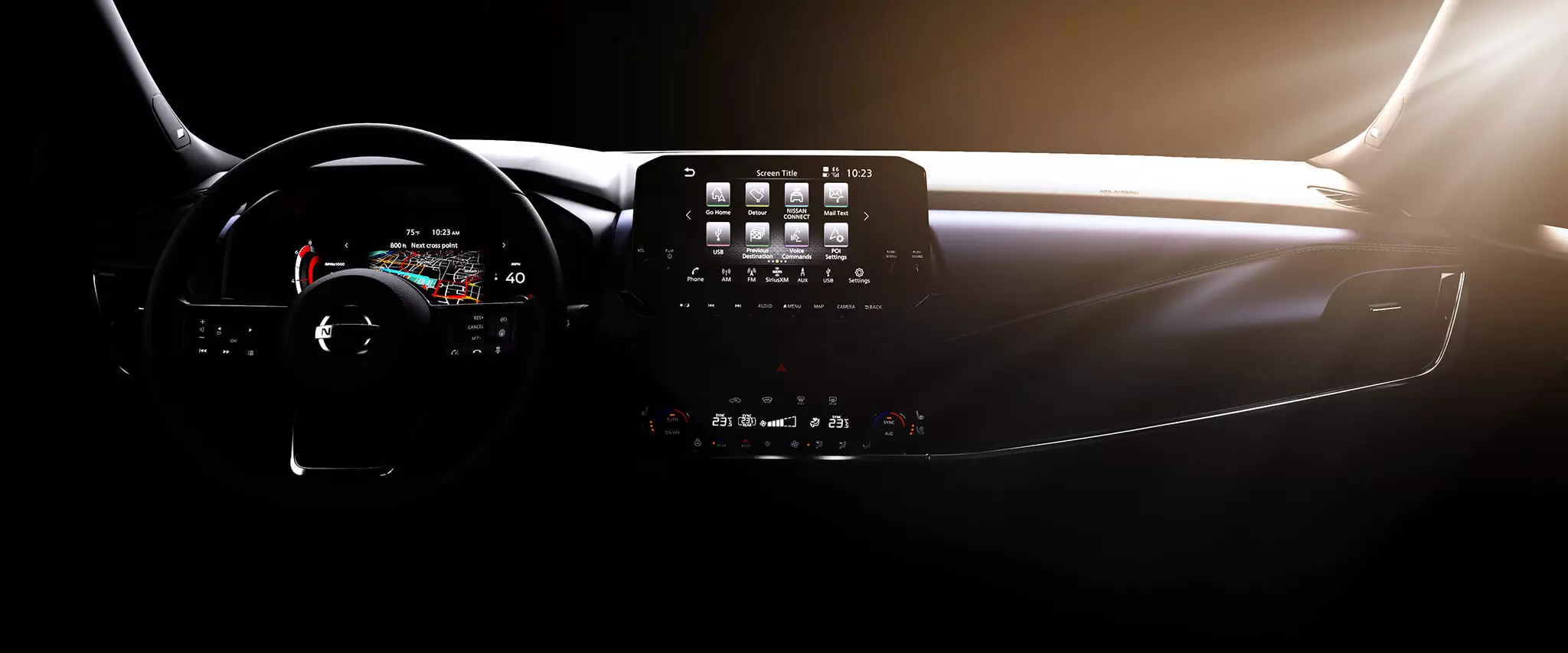Were it not for the pandemic and the third generation of Nissan Qashqai It has been with us since the end of last year — development of the new model has been delayed, as has the start of production, which should start in spring. To alleviate its prolonged absence, Nissan has been revealing it little by little: today is the day to find out which engines will equip the new Qashqai.
As previously confirmed, Nissan's best seller will not have Diesel engines, with the future model coming only with electrified engines: mild-hybrid gasoline and an unprecedented e-Power hybrid engine.
Car electrification is the order of the day, and it's no surprise that Nissan's announcement wants 50% of its European sales by fiscal year 2023 (ends March 31, 2024) to be based on electrified models.

Electric but gasoline
To achieve this goal, Nissan is relying heavily on the good acceptance of the unprecedented e-Power hybrid engine which will be debuted in Europe by the new Qashqai — the Nissan Note sold in Japan was the first to be equipped with such an engine and became a huge success, having been the best-selling car there in 2018 and the second in 2019.
Subscribe to our newsletter
The e-Power engine, however, will only reach Europe in 2022 , being different from what we saw in Note and Kicks, but obeying the same working logic — a topic already covered by us before.
Being a hybrid means that we have two distinct engines, one gasoline and the other electric, but unlike other “conventional” hybrids (full hybrid) on the market — Toyota Prius, for example — the gasoline engine only takes on the function of generator not being connected to the drive shaft. Propulsion uses only and only the electric motor!

In other words, the future Nissan Qashqai e-Power is, to all intents and purposes, an electric vehicle, but the energy that the electric motor requires will not come from a large and expensive battery, but from the gasoline engine. That's right, the Qashqai e-Power is an electric…gasoline!
The kinematic chain consists of an electric motor with 190 hp (140 kW), an inverter, a power generator, a (small) battery and, of course, the gasoline engine, here with 1.5 l of capacity and 157 hp , which is also an absolute novelty. It will be the first variable compression ratio engine to be marketed in Europe — the brand has been selling one in North America for several years.
As it works only as an electricity generator, the gasoline engine stays longer in its ideal use range, resulting in lower consumption and lower CO2 emissions. Nissan promises greater engine silence, requiring less revs. It also promises a superior connection to the road when accelerating, with a better relationship between engine speed and speed — goodbye, “elastic band” effect?
The Qashqai e-Power promises better performance than other hybrids — it's always 190 hp of power and 330 Nm of torque — and as the electric motor is the only one connected to the wheels, the user experience should be identical to a pure vehicle electric: always available torque and instantaneous response.
As if trying to demonstrate that this e-Power has more to do with electrics than hybrids, it also comes with the e-Pedal system that we found on the 100% electric Leaf. In other words, this means that we can drive with just the accelerator pedal, practically eliminating the brake pedal — when in operation, regenerative braking is strong enough to mobilize the vehicle, guaranteeing decelerations of up to 0.2 g.
The new Qashqai's gasoline engines
If the Qashqai e-Power is attracting attention, however, when it starts marketing, the Nissan crossover will only be available with gasoline engines. Or rather, with two versions of the same engine, the well-known 1.3 DIG-T.The novelty is that it is associated with a (only) 12 V mild-hybrid system. Why 12 V and not 48 V as we see in other proposals?
Nissan says its mild-hybrid ALiS (Advanced Lithium-ion battery System) 12V system has the features expected from these systems like torque assist, extended idle stop, quick restart and assisted deceleration (CVT only). This results in lower CO2 emissions at 4g/km, but manages to be less expensive and lighter than the 48V ones — the system weighs just 22kg.

The additional efficiency that the new Qashqai achieves over its predecessor comes from the 63 kg less of the new generation and its more efficient aerodynamics, says Nissan.
As mentioned, the 1.3 DIG-T will be available in two versions as with the current generation: 140 hp (240 Nm) and 160 hp (260 Nm) . The 140 hp version is associated with a six-speed manual gearbox, while the 160 hp version, in addition to the manual, can come equipped with a continuously variable gearbox (CVT). When this happens, the torque of the 1.3 DIG-T rises to 270 Nm and is the only engine-box combination to allow four-wheel drive (4WD).
Matthew Wright, Vice President of Powertrain Design and Development at Nissan Technical Center Europe.“Since 2007, when we invented the segment, the new Qashqai has always been the standard in the crossover segment. With the third-generation Qashqai, new and current customers will love the innovative powertrain options available to them. Our offering is simple. and innovative, with both powertrain options being efficient but still fun to drive. Our approach to the new electrified Qashqai is uncompromising and this is clearly evident in the 1.3 petrol, mild-hybrid technology and exclusive e-Power option ".
